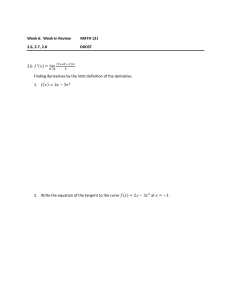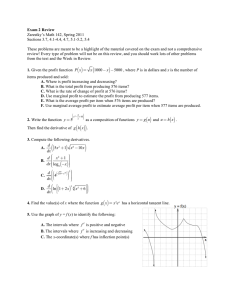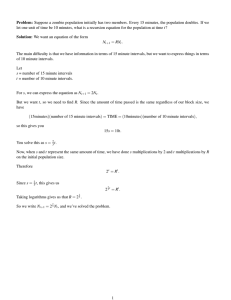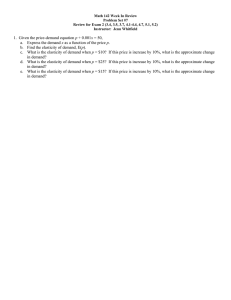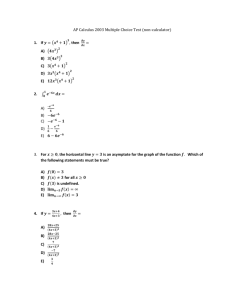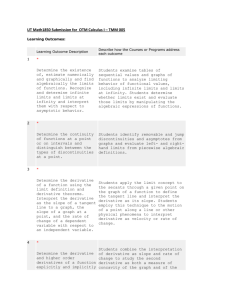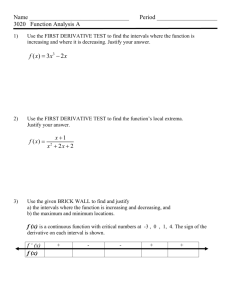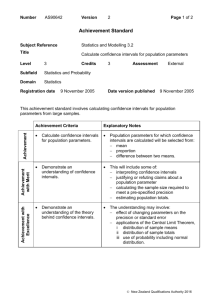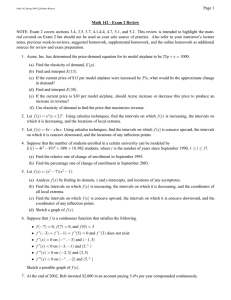WIR 4,
advertisement
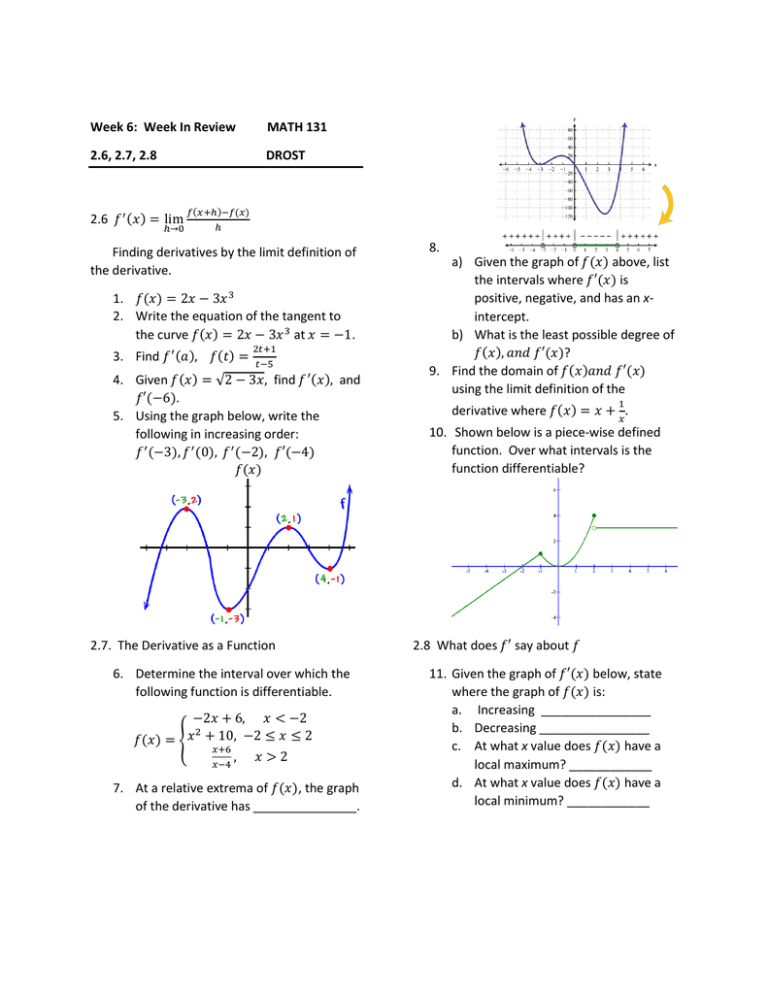
Week 6: Week In Review
MATH 131
2.6, 2.7, 2.8
DROST
𝑓(𝑥+ℎ)−𝑓(𝑥)
ℎ
ℎ→0
2.6 𝑓 ′ (𝑥) = lim
Finding derivatives by the limit definition of
the derivative.
1. 𝑓(𝑥) = 2𝑥 − 3𝑥 3
2. Write the equation of the tangent to
the curve 𝑓(𝑥) = 2𝑥 − 3𝑥 3 at 𝑥 = −1.
3. Find 𝑓 ′ (𝑎), 𝑓(𝑡) =
2𝑡+1
𝑡−5
4. Given 𝑓(𝑥) = √2 − 3𝑥, find 𝑓 ′ (𝑥), and
𝑓′(−6).
5. Using the graph below, write the
following in increasing order:
𝑓 ′ (−3), 𝑓 ′ (0), 𝑓 ′ (−2), 𝑓′(−4)
𝑓(𝑥)
2.7. The Derivative as a Function
6. Determine the interval over which the
following function is differentiable.
−2𝑥 + 6, 𝑥 < −2
2
𝑥
𝑓(𝑥) = { + 10, −2 ≤ 𝑥 ≤ 2
𝑥+6
,
𝑥−4
𝑥>2
7. At a relative extrema of 𝑓(𝑥), the graph
of the derivative has _______________.
8.
a) Given the graph of 𝑓(𝑥) above, list
the intervals where 𝑓′(𝑥) is
positive, negative, and has an xintercept.
b) What is the least possible degree of
𝑓(𝑥), 𝑎𝑛𝑑 𝑓′(𝑥)?
9. Find the domain of 𝑓(𝑥)𝑎𝑛𝑑 𝑓′(𝑥)
using the limit definition of the
1
derivative where 𝑓(𝑥) = 𝑥 + 𝑥.
10. Shown below is a piece-wise defined
function. Over what intervals is the
function differentiable?
2.8 What does 𝑓′ say about 𝑓
11. Given the graph of 𝑓′(𝑥) below, state
where the graph of 𝑓(𝑥) is:
a. Increasing ________________
b. Decreasing ________________
c. At what x value does 𝑓(𝑥) have a
local maximum? ____________
d. At what x value does 𝑓(𝑥) have a
local minimum? ____________
15. a. What is the antiderivative of the
velocity function?
b. What is the antiderivative of the
acceleration function?
12. Given the graph of 𝑓(𝑥), estimate the
intervals over which 𝑓 ′ (𝑥) is increasing
or decreasing.
13. Sketch the graph of a function which
satisfies all of the given conditions.
a. 𝑓 ′ (1) = 𝑓 ′ (−1) = 0,
b. 𝑓 ′ (𝑥) < 0 𝑖𝑓 |𝑥| < 1 ,
c. 𝑓 ′ (𝑥) > 0 𝑖𝑓 1 < |𝑥| < 2,
d. 𝑓 ′ (𝑥) = −1 𝑖𝑓 |𝑥| > 2,
e. 𝑓 ′′ (𝑥) < 0 𝑖𝑓 − 2 < 𝑥 < 0,
f. 𝑖𝑛𝑓𝑙𝑒𝑐𝑡𝑖𝑜𝑛 𝑝𝑜𝑖𝑛𝑡𝑠 (0,1)
14. Let 𝑓(𝑥) = 𝑥 4 − 3𝑥 2 ,
𝑓 ′ (𝑥) = 4𝑥 3 − 6𝑥, and
𝑓 ′′ (𝑥) = 12𝑥 2 − 6
a. Find the intervals where 𝑓(𝑥) is ↗ .
b. Find the intervals where 𝑓(𝑥) is ↘ .
c. Find the intervals where 𝑓(𝑥) is ∪ .
d. Find the intervals where 𝑓(𝑥) is ∩ .
e. The inflection point(s) of 𝑓(𝑥).
